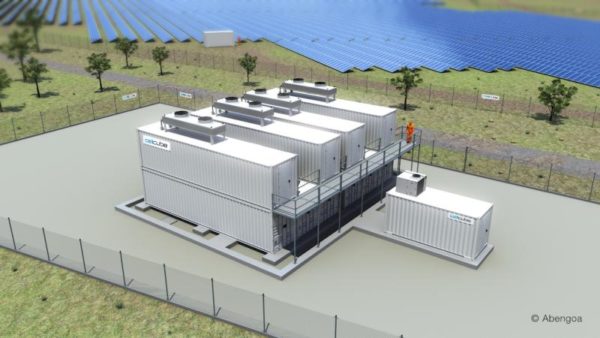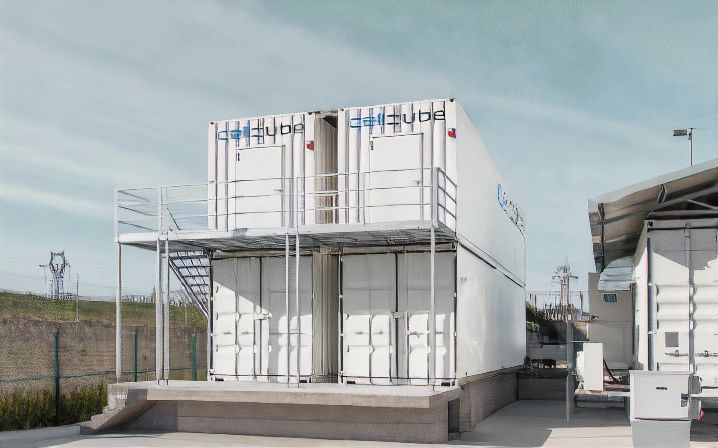Sydney-headquartered North Harbour Clean Energy (NHCE) has announced a joint venture with CellCube, owned by Austria’s Enerox, to build a vanadium redox flow battery (VRFB) assembly and manufacturing line in eastern Australia to “meet GWh demand for long-duration energy storage in the National Electricity Market.”
NHCE founder Tony Schultz said the Strategic Manufacturing Cooperation Agreement will see the two companies conduct a feasibility study and work toward a final investment decision on a 50:50 joint venture to manufacture VRFBs in Australia.
“NHCE and CellCube will collectively review and select the best sites to deliver initial annual production capacity of at least 40 MW/160 MWh, with a target of 1,000 MW/8,000 MWh per year and creating more than 200 new jobs in the short term,” he said.
Schultz said the partnership will target Australian commercial and industrial projects for the potential use of VRFB technology to meet demand driven by Australia’s rapid build out of utility-scale variable renewable energy and the accelerated shutdown of baseload coal-fired generators.
“We believe there are two factors behind our belief that VRFB is the right grid-energy storage technology to install in Australia at scale,” Schultz said. “The first is that VRFB technology, having been developed in Australia at the University of New South Wales (UNSW) in the mid-1980s, is now on the road to being an accepted alternative battery energy storage technology globally while the second is Australia’s abundant vanadium resources.”
The first project executed by the partnership will be developing Australia’s largest VRFB, with a 4 MW/16 MWh VRFB system to be installed at an industrial customer’s site to showcase the various applications of CellCube’s proprietary technology.

Image: CellCube
CellCube said VRFB technology offers a viable alternative to lithium-ion batteries (LIBs), claiming on a levelised cost of storage basis, VRFBs already outperform LIBs while having none of the drawbacks associated with them. The company said flow batteries are inherently non-flammable or explosive and the chemistry is non-degradable and has an almost infinite life. Even when an end-of-life scenario for an individual deployed energy storage system is envisioned, the medium can be reused.
NHCE Executive Director of Development Steve Banning said the agreement’s objective is to provide 24/7 green power supply arrangements to support industrial and commercial customers looking to increase their use of renewable energy sources, and who face severe issues on power quality, grid constraints, rising network costs and high-power prices.
“We will be warranting the systems produced for 20,000 cycles or approximately 20 years of use,” he said.
CellCube Chief Executive Alexander Schoenfeldt said the partnership supports the company’s vision of large-scale production and deployment of VRFBs as the preferred energy storage technology long term.
“This cooperation with NHCE follows our business strategy to strengthen regional partnership, create a local product offering and enhance our work with Australian supply chain partners to build well-designed megawatt microgrids,” he said.
“In addition, Australia has around 20% of known global vanadium resources and it makes economic sense to use local vanadium instead of importing it from elsewhere.”
This content is protected by copyright and may not be reused. If you want to cooperate with us and would like to reuse some of our content, please contact: editors@pv-magazine.com.









By submitting this form you agree to pv magazine using your data for the purposes of publishing your comment.
Your personal data will only be disclosed or otherwise transmitted to third parties for the purposes of spam filtering or if this is necessary for technical maintenance of the website. Any other transfer to third parties will not take place unless this is justified on the basis of applicable data protection regulations or if pv magazine is legally obliged to do so.
You may revoke this consent at any time with effect for the future, in which case your personal data will be deleted immediately. Otherwise, your data will be deleted if pv magazine has processed your request or the purpose of data storage is fulfilled.
Further information on data privacy can be found in our Data Protection Policy.